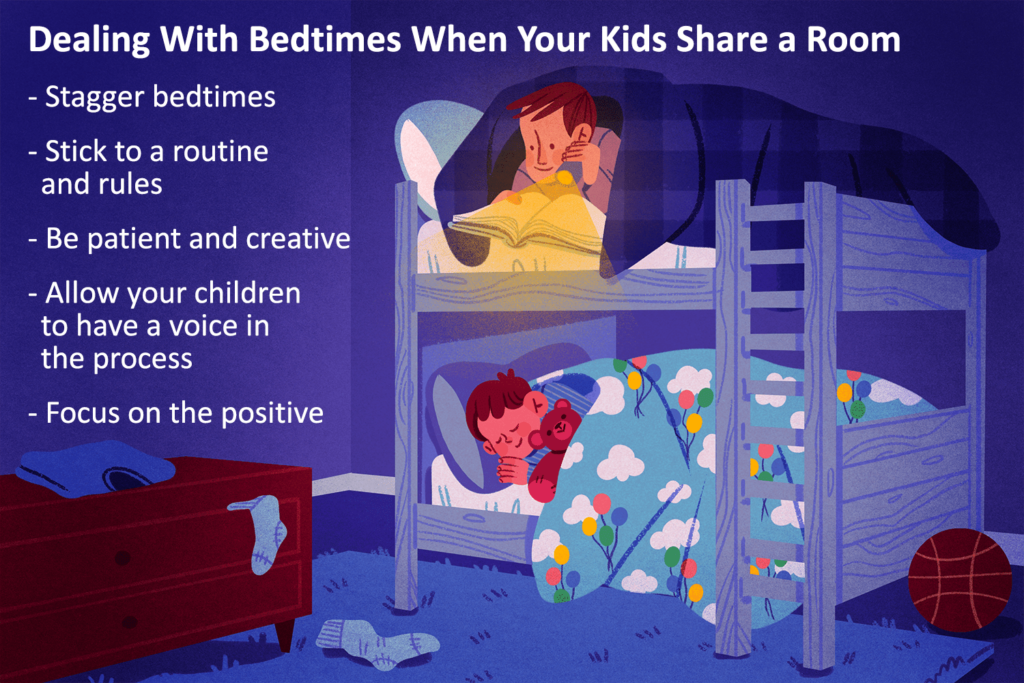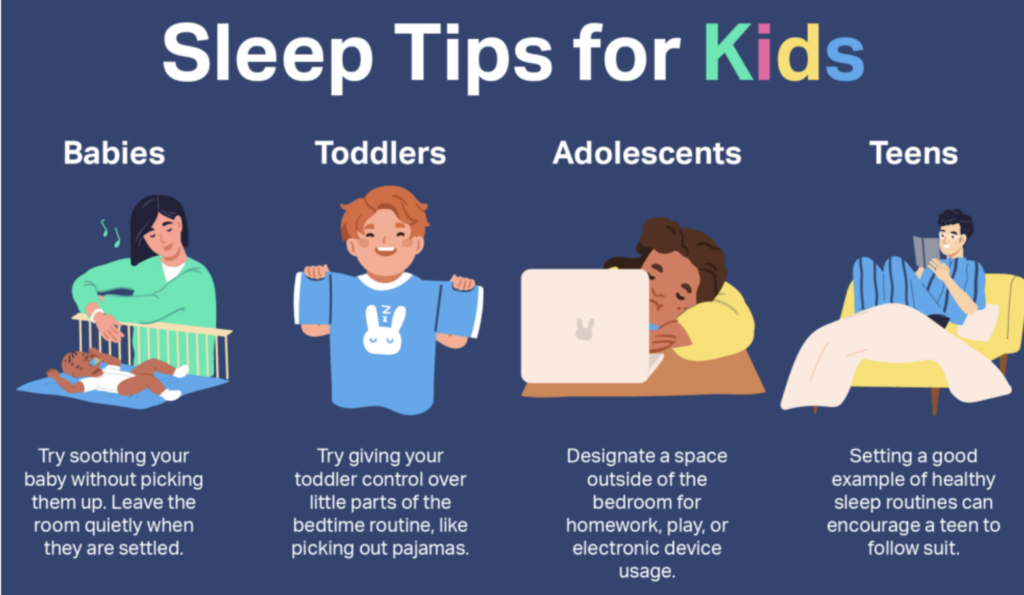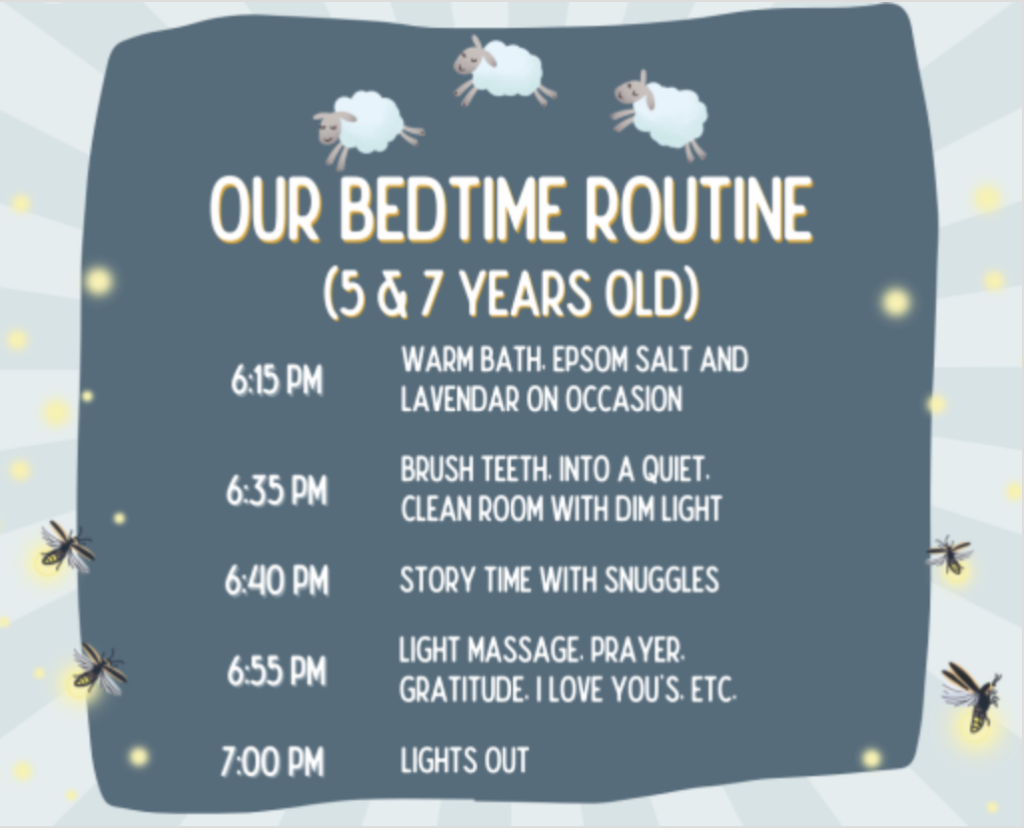Set the best bedtime for kids by establishing a routine that will allow them to get the right amount of sleep according to their age. In order to determine the best time for kids, plan a specific set of activities throughout the day and ensure they get sufficient sleep to remain healthy.
A study in the journal Pediatrics states that children with irregular bedtimes experience more behavioral changes than the ones who follow a routine. In addition to the adverse effects on health, kids who do not have a specific sleep routine also experience unhappiness and are unable to regulate emotions.
Besides having an impact on mental health, irregular sleeping patterns can also have a considerable impact on physical health. If your kids take too long to get up the next morning or ask the alarm to be snoozed multiple times, they are not getting sufficient sleep during the night.
How Do You Determine the Best Bedtime for Kids?

In order to perfect the sleep routine for your kid, it is imperative to determine bedtime problems, understand the relation between children and sleep, establish appropriate sleeping hours according to their age group, and use simple tricks to improve slumber time.
Studies reveal that regular bedtime improves cognitive function, attention, and overall well-being. Define a schedule that fits your family routine, based on daily activities, that can really help children feel relaxed at the end of each day.
Setting Up the Bedtime
- Set a time: Observe daily routine to define a pattern.
- Slow down: Swap energy-stimulating tasks and reserve activities that will help them unwind towards the end of the day.
- Dim the lights: Exposure to artificial light decreases melatonin levels in the body and delays sleepiness.
Mistakes to Avoid in Setting up a Bedtime Routine
- Changing routine: Do not opt for a lot of trial and error.
- Ignoring cues: that state the child is tired and needs rest.
- Stretching the bedtime routine: This will make it harder to continue on a regular basis.
Common Bedtime Problems Affecting Kids

Most kids make excuses to remain awake, get out of bed several times during the night, or keep stalling going to bed. Hence, to improve bedtime behavior, you need to understand that forcing your kid to go to bed will not help but rather delay the process.
In order to ensure your kids sleep easily and quickly, a defined skill set must include setting bedtime limits. Be persistent and teach self-control. If they cry or yell, calm them down with a distracting story.
If they leave the bed instantly, put them back and retreat from the room (you can slowly check on them later). If your kids are scared of sleeping in the dark, use a nightlight and leave the door open.
It is imperative to understand their biological clock, so start making subtle changes at first. If their bedtime is later, forcing them to sleep will make your efforts go in vain, so start by making bedtime 15 minutes earlier each day.
Ignore complaints and protests and restrict high-energy activities like playing, watching television, and snacking. Reward kids for small achievements, and don’t dwell on misbehavior. Rather, find a way to teach them good habits through enjoyable activities.
Research indicates kids from kindergarten to fourth grade experience sleep-related problems. The following conditions will help you understand the relationship between children and sleep:
1. Nightmares
This is due to stress or transitional stages. Thus, it is best to avoid scary stories/content before bed and to comfort the child if they experience a similar ordeal.
2. Sleepwalking and Other Terrors
This happens due to a state of overtiredness. Try not to wake the child since it may take longer for them to fall asleep later. However, try to ensure that they do not get injured around the house.
3. Sleep Apnea
Due to medical problems, kids may experience restlessness. Mild cases can be treated with common medication, nasal sprays, and antihistamines; however, it is advisable to visit your pediatrician if the condition worsens.
4. Sleep Attacks of Narcolepsy
It is triggered by stress, and strong emotions can cause kids to have sleep attacks or sleep for excessive hours during the day. You can try to keep kids active throughout the day and regulate sleep cycles.
Some children operate fine without much sleep, while others get cranky. To understand the duration of sleep according to different age groups, here’s a chart that you can tweak according to your daily schedule:
Guidelines to Set the Best Bedtime for Kids
According to the standard growth chart:
|
Age of child |
The average amount of sleep |
Ideal bedtime/naptime |
|
1-4 weeks old |
15-16 hours |
Short naps, but not more than 3 hours during the day |
|
1-4 months old |
14-15 hours |
Transition to a long noon nap |
|
4-12 months old |
14-15 hours |
6:30 pm to 7 pm |
|
1-3 years old |
12-14 hours |
Not later than 7 pm |
|
3-6 years old |
10-12 hours |
Not later than 7:30 pm |
|
7-12 years old |
10-11 hours |
Approximately 8 to 8:30 pm |
|
12-18 years old |
8-9 hours |
Around 9 pm |
If you find it difficult to follow this chart, the best thing would be to observe your child during evening hours and try to reduce high-energy activities as you draw closer to bedtime.
In general, the best time for kids is to sleep by 8 PM, whereas for teenagers, it is before 10 PM. Early bedtime involves less difficulty in falling asleep, more overall sleep, waking up refreshed and ensuring optimal health.
Tips to Set the Best Bedtime for Kids

You can use the unique activities at different intervals to create a relaxing routine. Before bedtime, create a sleep-conducive environment by removing all electronic gadgets. Make the room cool and dark, and keep simple toys around that your kids like to sleep with.
The pre-sleep routine can include brushing teeth, bathing, and changing into pajamas, after which you can start moving towards the bed to say prayers and read a short story if needed.
During bedtime, check if kids wake up in the middle of the night. Teach them to walk carefully to the restroom and go back to bed. If it is past their bedtime, try not to delay the decided sleep hour. If the kids are still unable to sleep, check for unusual patterns of ill health or if they wake up several times during the night.
(Additional tip: Reward kids by hiding a surprise under the pillow and making a special breakfast with favorite goodies).
Besides setting the best bedtime for kids, you can include good sleep habits like no electronic devices at least 2 hours before bed, following regular bedtime based on the body’s circadian rhythm, and setting a consistent routine on working days, weekends, and vacations.
Also, remember to avoid sugar content before bed. Adults are advised to avoid caffeine before bed and restrict kids to consuming chocolate and soda a few hours before bedtime.
For school children, the routine can be slightly altered to find the best bedtime for kids. Teach kids to help with small activities like tidying up their room before bed and putting together things for the next day.
Middle middle-schoolers try to maintain a similar routine on working days and weekends so that they don’t have much trouble adjusting to school schedules daily.
Create a timetable but allow little flexibility by including a small activity like reading a story as a part of their bedtime routine. As kids grow older, you can encourage them to become self-reliant and create their own routines.
Hacks to Help Kids Follow a Consistent Routine
1. Create an Ambiance
Creating screen-free zones by strictly not using any gadgets in the bedroom. Remember to make the room dark or use curtains to block light. Also, ensure the room temperature is optimal.
2. Healthy Meals
Avoid processed foods and complex carbohydrates like crackers, cheese, yogurt, nuts, and snacks 20 minutes before bedtime. Also, reduce the amount of liquid consumption, especially caffeinated sodas.
3. Taking Part in Activities
include relaxing tasks that help to induce sleep and rest throughout the night. You can also include activities like singing a lullaby, practicing mindfulness, and expressing gratitude for the day.
4. Reading Books
instill a regular reading habit to improve vocabulary and comprehension. Reading also helps to drift off easily, thereby lessening your efforts of putting the kid to sleep.
Apply discipline strategies to get rid of sleepless nights with this list of dos and don’ts:
|
Do’s |
Don’ts |
|
Have a short, consistent routine. |
High-stimulating activities before bed. |
|
Provide age-appropriate alternatives. |
Encouraging poor sleep habits. |
|
Include dental hygiene. |
Consuming sugar and carbs. |
|
Establish an early routine. |
Dragging the bedtime routine. |
|
Create a conducive ambience. |
Exposure to screen and light. |
|
Keep toys and other essentials nearby. |
Deviating from the routine too much. |
Final Thoughts
Perfect your kids’ bedtime by establishing an effective bedtime routine. You can offer incentives to encourage kids to follow this routine.
The best bedtime for kids can also be formed by using sleep training methods, including the fading method. Try to decrease end-of-the-day activities by setting a routine a few minutes earlier every day until you reach an optimal time.
With room transition, start by camping out in the kids’ room for a few days. Keep surroundings familiar and use positive reinforcement to encourage them to stay in bed.
Remember to set aside time during the day for kids to share their worries. Ensure to give them your full attention during this discussion. To further aid in setting the best bedtime for kids, apply relaxation methods that include relaxing muscles with massages, soothing music, breathing exercises, and mindfulness techniques.
If your kids are not fond of reading, introduce low-energy activities like jigsaws and coloring pictures that aid relaxation and improve motor skills. End the day by saying prayers and practicing gratitude.
Frequently Asked Questions
What Is the Best Bedtime for Kids Aged 1-5 Years?
Toddlers and kindergartners usually sleep 12-14 hours (including daytime naps), but some of them find it difficult to follow the 7 p.m. routine. Based on your schedule, you can stretch the timing to 8 p.m. or 30 minutes post-usual bedtime.
Can You Tell if The Bedtime Is Too Early?
Signs that state it is too early for bed include stretching the bedtime routine more than 60 minutes, showing no signs of fatigue at bedtime, and your toddler waking up refreshed very early the next day.
Which Cues State that The Bedtime Is Too Late?
If your kid shows signs of fatigue, needs an hour (or more) to fall asleep, has trouble waking up the next day, or gets up during the light stages of the sleep cycle, set an early bedtime and avoid further winding up your kid.
How Long Does It Take to Find the Best Bedtime for Kids?
Ideally, you will need to experiment for roughly two weeks to find the best bedtime for kids. Begin their routine 15 minutes before bedtime and slowly transition all activities accordingly to aid the process.
Is It Possible to Fix Sleep Regression Easily?
Although you may set the best bedtime for kids, some may cry, fuss, and find it difficult to sleep soundly through the night. To fix this regression, try to maintain consistent sleep patterns, create a calming ambiance, comfort kids, and be flexible with distracting activities.
















